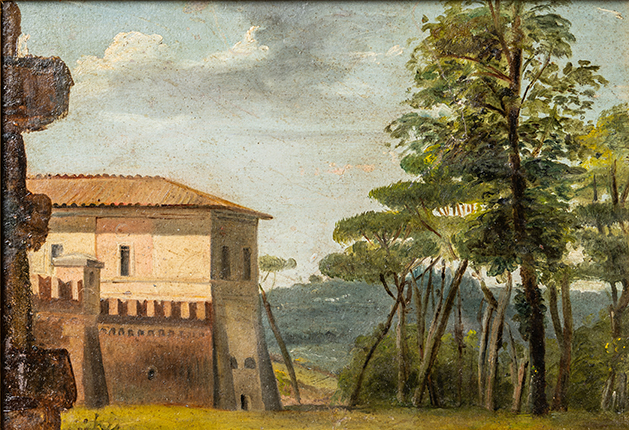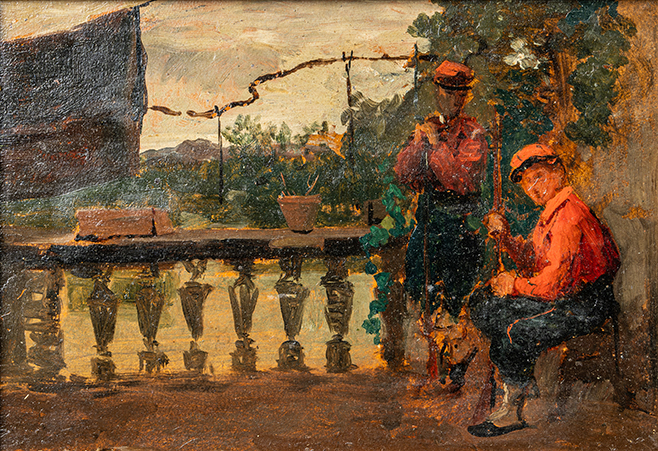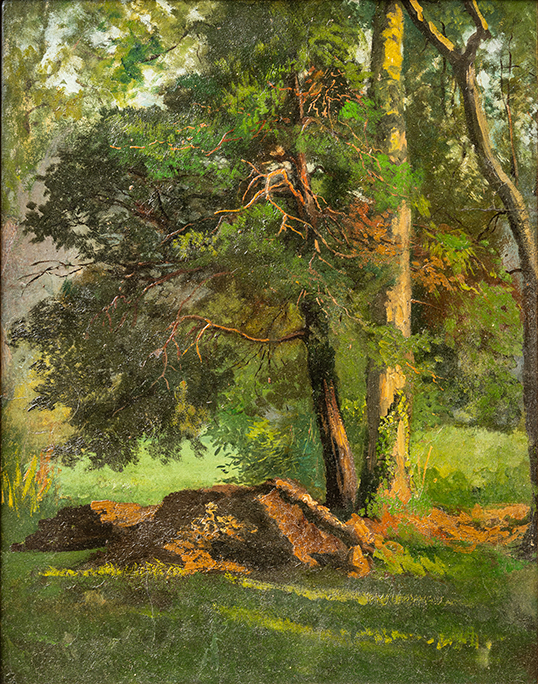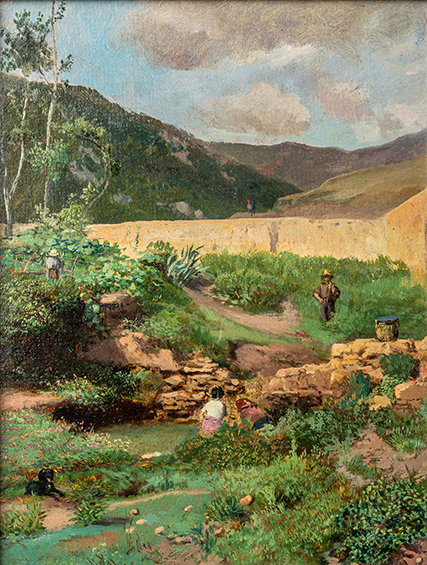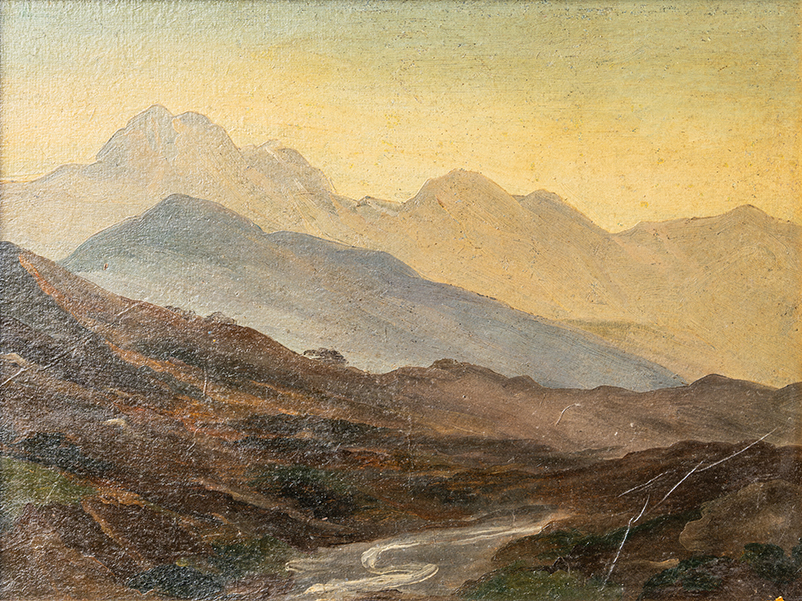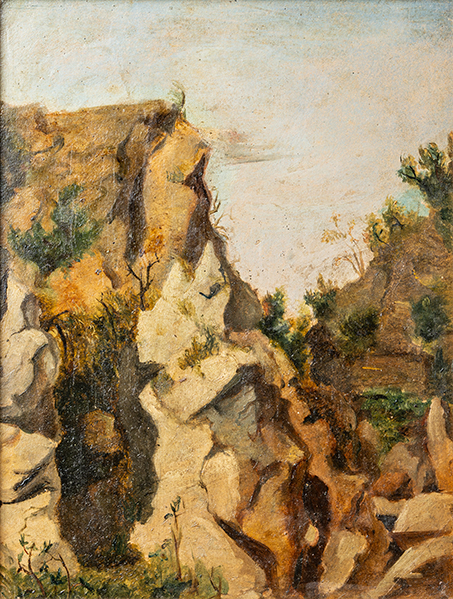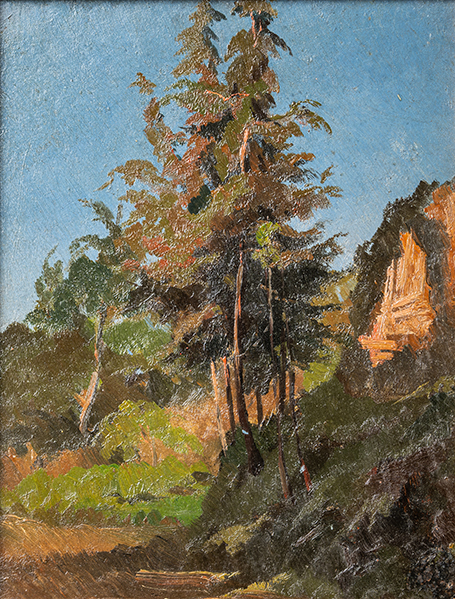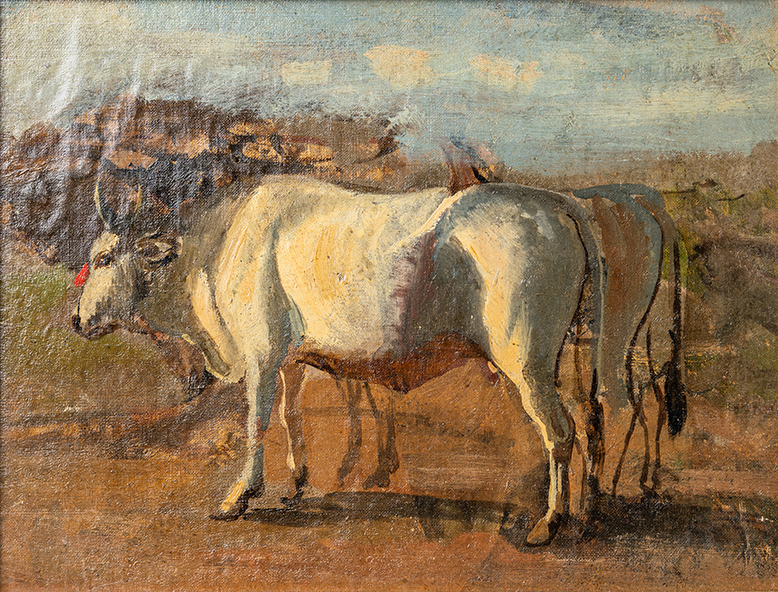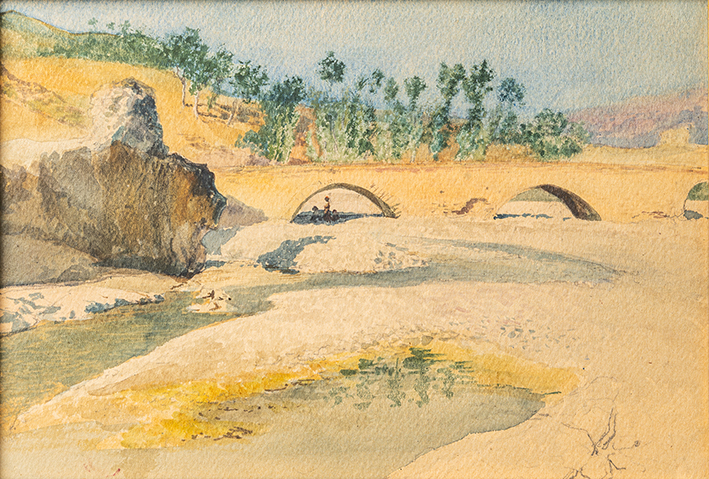Artista
Gennaro
Della Monica
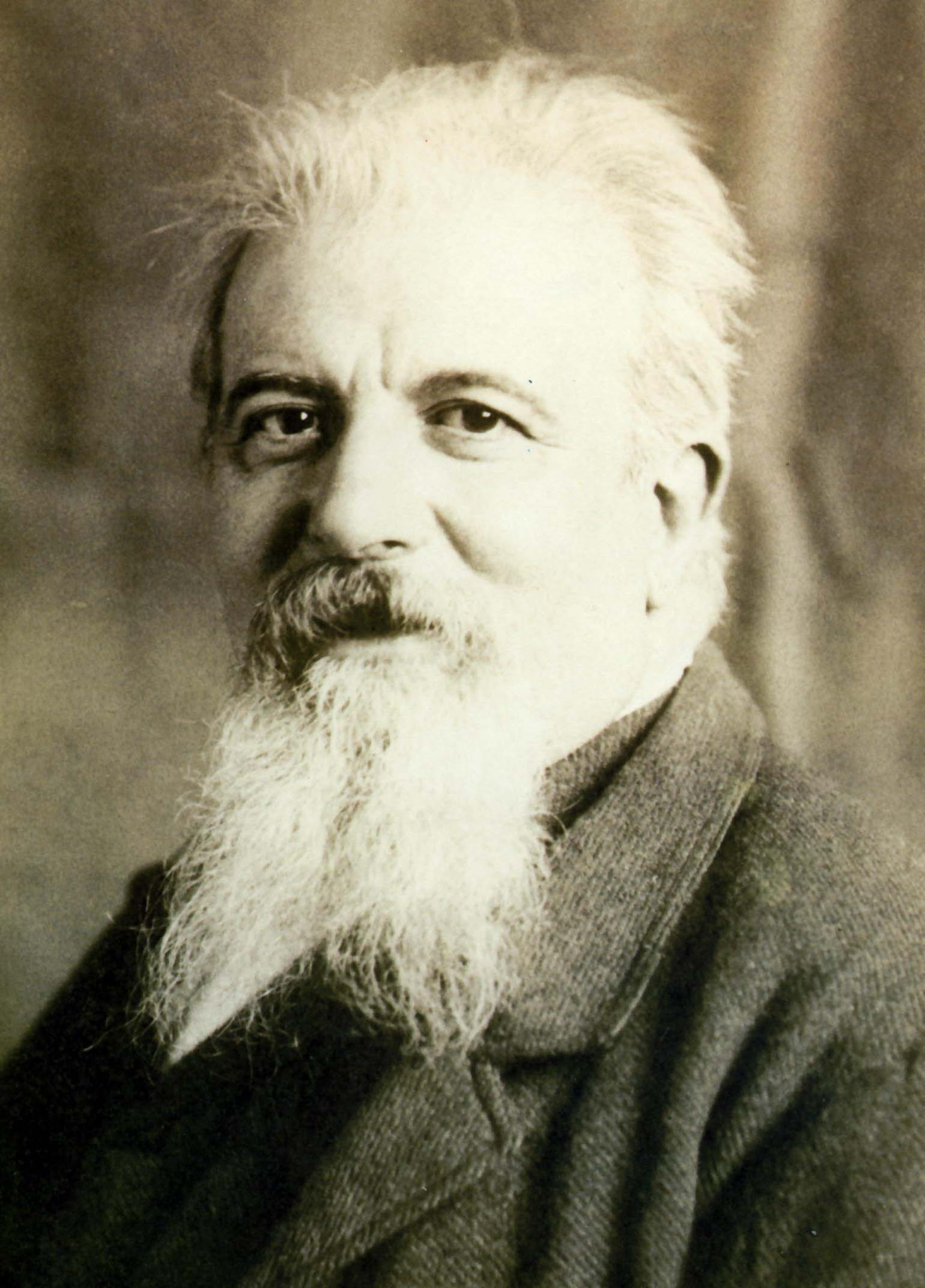
Teramo, 1836-1917
Gennaro Della Monica is a painter and architect from Teramo, at the age of 17 he moves to Naples to study at the Academy of Fine Arts, where together with other painters from the Abruzzo region and Naples, he brings in a refreshing anti-academic perspective that completely renews the artistic scene. He moves to Milan and later in 1863 to Florence, where he frequents the literary salon of the Teramo poetess Giannina Milli, who was a confidante of famous artists and politicians of that period. In 1867, Della Monica returns to Teramo to care for his seriously ill father and secures a teaching position at the Technical Institute and the Municipal School of Drawing.
Known for his historical, religious, and caricatural paintings, Della Monica anticipates Italian Impressionism with his "en plein air" painted panels, characterized by meticulous attention to light and its expressive qualities. He designs the medieval village of Teramo on San Venanzio Hill in various architectural styles, ranging from neo-Gothic to Moorish, with the main building being the structure known as Il Castello (The Castle). He receives numerous honors for his undisputed merits as an artist, architect and educator, eventually earning the title of honorary professor at the Academy of Fine Arts in Naples. He continues to exhibit his works on multiple occasions in Turin, Naples, Florence, Genoa, and at the Universal Exhibition of 1884 in Turin.
In his memoirs, published in 1902, Della Monica expressed a clear awareness of his artistic choices, stating that he found "comfort" in discovering in "modern works" what he had always "fancied and attempted" in terms of compositional innovation, anti-academicism, and openness to new artistic expressions.
In his works, the interplay of lines and light plays a fundamental role, creating mysterious surfaces, alluding to a ghostly presence of naturalistic participation, sometimes torn by swift and nervous graphics, sustained and controlled by the awareness of the whole. His landscape painting is of such freshness and color, such luminosity, such vastness of breath in the small panels assaulted by his chromaticism, with such accuracy of tones and atmospheric suggestion, halfway between the twilight vibrations of Daubigny and the soft chromaticism of a Chintreuil.
